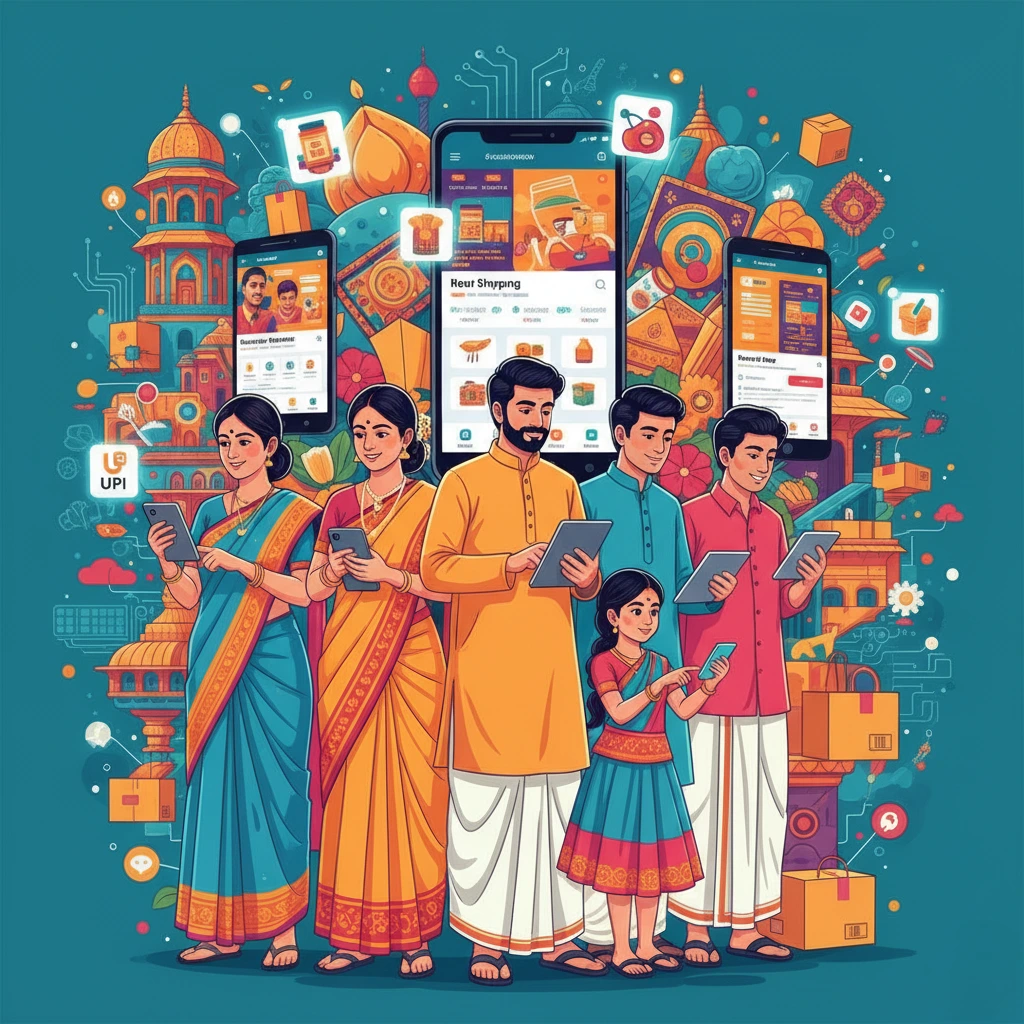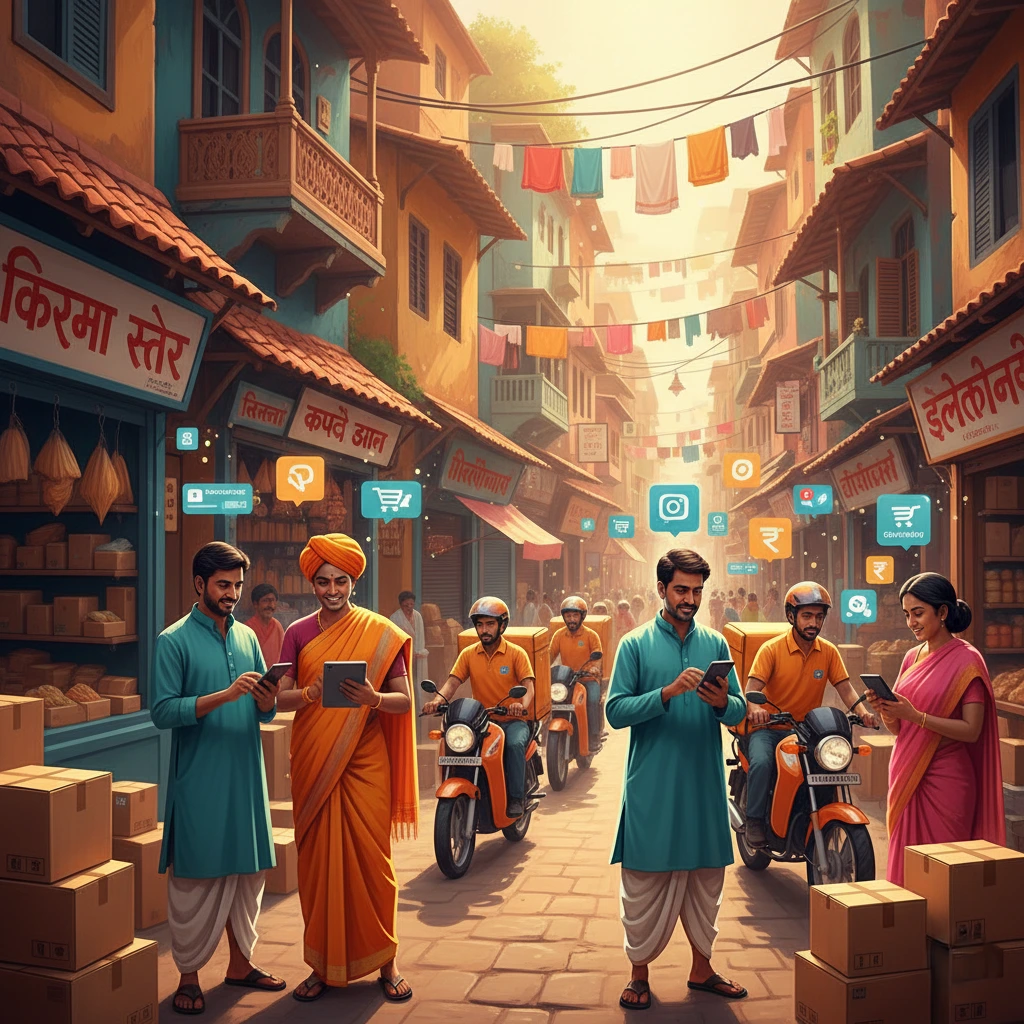India’s next wave of online shoppers is not coming from English-speaking metros. It’s coming from small towns and rural regions where people browse, search, and shop in their own languages. Vernacular and voice commerce are unlocking this vast new audience of over one hundred million potential customers. As technology evolves and digital adoption spreads, the power of language and voice is reshaping how India shops online.
The Next Hundred Million Are Not English First
Most of India’s internet users are now from Tier-2 and Tier-3 cities, and a large share prefers regional languages over English. According to multiple industry reports, more than 80 percent of new internet users in India are comfortable consuming content in local languages such as Hindi, Tamil, Bengali, Telugu, and Marathi.
For years, e-commerce platforms focused on English-centric designs and interfaces. That approach no longer works. Today’s emerging shoppers use the internet through regional keyboards, voice search, and video content. They expect the same personalized experience that English-speaking users enjoy—only in their own language.
Breaking the Language Barrier
This linguistic shift is not just a matter of translation. It’s about cultural connection. A product listed in Hindi or Tamil immediately feels more relatable. Reviews written in local languages build stronger trust. When a voice assistant can respond to “yeh product ka size kya hai” instead of “what size is this product,” the digital store suddenly becomes welcoming and human.
Vernacular Commerce The Game Changer
Vernacular commerce means using local languages across every touchpoint—app navigation, search, product descriptions, customer support, and ads. Companies like Flipkart, Amazon, and Meesho are leading the way, offering multilingual interfaces and customer service in multiple Indian languages.
Flipkart’s Regional Revolution
Flipkart has introduced interfaces in more than ten languages. It found that users who shop in their native tongue spend significantly more time on the app and are more likely to complete purchases. When people understand every step of their buying journey, hesitation drops and confidence rises.
Meesho’s Local Success
Meesho, a social commerce pioneer, built its user base by empowering small sellers and customers who prefer Hindi and regional languages. Its localized approach helped it reach audiences in towns where English-only apps never made an impact. Meesho’s vernacular onboarding videos, regional notifications, and language-specific recommendations have become benchmarks for how to build for Bharat.
Voice Commerce Making Shopping Hands Free
While vernacular text interfaces are one part of the puzzle, voice technology is the next frontier. With voice assistants like Google Assistant, Alexa, and Siri gaining popularity, Indians are getting comfortable using voice commands for daily tasks—whether checking the weather, playing music, or searching for products.
Voice commerce takes this behavior into online shopping. Instead of typing long queries, users can simply speak them. It’s faster, easier, and far more natural for millions who may not type fluently in English.
How Voice Commerce Works
Voice commerce combines speech recognition, AI, and natural language processing to understand spoken commands. A shopper can say “show me red sarees under one thousand rupees” and instantly receive relevant results. This reduces friction and boosts accessibility, particularly for older users and those in rural areas.
Brands Adopting Voice-Enabled Shopping
Big players like Amazon have already introduced voice-based search and ordering options in Hindi. Startups are also exploring multilingual voice bots that can assist users through WhatsApp or IVR calls. This new interface turns shopping into a conversation rather than a transaction.
Why Vernacular and Voice Commerce Matter
Accessibility for All
Language should never be a barrier to participation in the digital economy. Vernacular and voice interfaces bring inclusivity, enabling first-time internet users to shop confidently. For many, hearing or reading instructions in their mother tongue transforms a confusing process into a friendly experience.
Trust and Emotional Connection
Consumers trust brands that speak their language—literally. A Tamil ad for an online grocery store feels local and familiar, while an English ad might feel distant. The emotional comfort of hearing a voice in one’s own language builds instant credibility.
Expanding the Market
The next 100 million shoppers are not an abstract idea—they represent a trillion-dollar opportunity. These customers may have different budgets, but their aspirations match anyone else’s. By removing language barriers, brands can tap into entirely new segments of consumers who were previously invisible to mainstream e-commerce.
Building a Vernacular-First E-commerce Strategy
Localize Every Touchpoint
Localization is more than translating words. It includes adjusting product visuals, adapting pricing displays, and creating culturally relevant marketing. For example, promoting a Diwali offer in Hindi for North India and a Pongal sale in Tamil Nadu makes users feel valued.
Train AI for Regional Languages
Voice recognition models must be trained to understand Indian accents and dialects. Companies are investing heavily in natural language processing (NLP) that can interpret mixed-language speech like “mujhe blue kurta chahiye under 500.” This hybrid Hindi-English pattern is common in India and must be supported for voice commerce to succeed.
Empower Regional Sellers
Local sellers are vital to this ecosystem. E-commerce platforms can help them create listings in regional languages, produce localized ads, and interact with customers through vernacular tools. This not only drives sales but also supports India’s vision of a digital and inclusive economy.
Technology Behind the Transformation
The rise of vernacular and voice commerce is powered by advancements in AI, machine translation, and speech recognition. With the growth of cloud infrastructure and affordable smartphones, even budget devices now support voice commands and multilingual interfaces.
Startups are using AI to generate real-time translations and voiceovers for product videos. Machine learning helps platforms identify regional trends—like what shoppers in Bihar search for versus those in Kerala—and personalize recommendations accordingly.
Government and Industry Support
India’s Digital India initiative has emphasized inclusivity. The government encourages platforms to provide content in regional languages to ensure broader participation. Private players are complementing these efforts through language-first innovations and investments in linguistic AI.
Industry associations are also supporting startups building regional tech solutions. As the ecosystem matures, vernacular and voice interfaces will become default features, not optional add-ons.
Challenges Ahead
While progress is rapid, challenges remain. Machine translation is not always perfect, especially with idioms or culturally specific terms. Ensuring accuracy while preserving tone is crucial. Similarly, voice recognition systems must handle background noise, varied accents, and multilingual code-switching.
Brands must also invest in trust building. Many first-time users are skeptical about online payments or deliveries. Providing customer support in regional languages through voice or chat can significantly reduce this hesitation.
Future The Voice of Bharat Is Digital
The future of Indian e-commerce is multilingual, conversational, and inclusive. As technology continues to evolve, more Indians will shop online through a mix of voice commands, regional content, and local storytelling. Vernacular and voice commerce are not trends—they are the foundation for India’s next digital revolution.
Brands that start building for Bharat today will be tomorrow’s leaders. Because the future of online shopping in India doesn’t just speak English—it speaks every Indian language.


